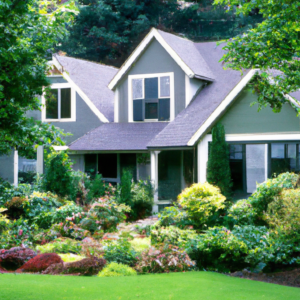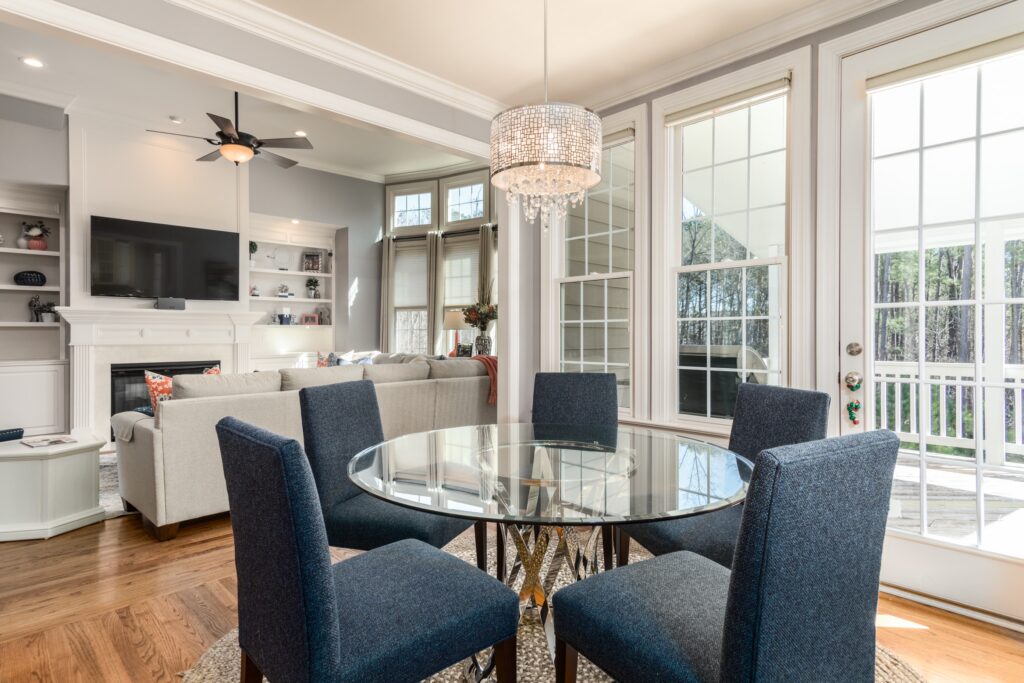Blog
How Many Seniors Use Smart Home Devices?
Discover the surprising numbers behind seniors embracing smart home devices. Explore the benefits, adoption statistics, challenges, and future trends.
Imagine living in a world where technology isn’t just for the young; it’s for everyone. A world where the elderly are taking full advantage of modern conveniences and embracing senior smart home devices. But just how many seniors are actually using these high-tech gadgets? In this article, we’ll explore the growing trend of seniors embracing smart home technology and uncover the surprising numbers behind it. Get ready to be amazed by the increasing number of seniors who are making their homes smarter, safer, and more connected than ever before.
Understanding the Concept of Smart Home Devices

1.1 What are Smart Home Devices?
Smart home devices refer to electronic devices that are connected to the internet and can be remotely controlled and automated. These devices are designed to provide homeowners with increased convenience, security, and energy efficiency. Examples of smart home devices include smart thermostats, smart door locks, smart security cameras, and smart lighting systems.
1.2 Definition of Seniors
In the context of this article, seniors refer to individuals who are aged 65 years and above. This age group is commonly associated with retirement and may have specific needs and challenges related to aging. It is important to understand the unique requirements of seniors when considering the adoption of smart home devices.
Importance and Benefits of Smart Home Devices for Seniors
2.1 Enhanced Safety and Security
One of the key benefits of smart home devices for seniors is enhanced safety and security. Smart doorbell cameras, for example, allow seniors to see who is at their door without having to physically open it, reducing the risk of potential harm. Smart security systems can provide real-time alerts and notifications in the event of a security breach, giving seniors peace of mind. Additionally, smart smoke detectors and carbon monoxide detectors can help prevent accidents and provide immediate alerts in case of emergencies.
2.2 Improved Accessibility and Independence
Smart home devices can greatly improve accessibility and independence for seniors. Voice-activated assistants, such as Amazon Alexa or Google Assistant, can perform various tasks through simple voice commands. This allows seniors to control their devices, play music, get weather updates, and even make phone calls without needing to physically interact with devices or navigate complex interfaces. Smart home automation systems can also be programmed to automatically adjust lighting, temperature, and other settings, making it easier for seniors to maintain a comfortable living environment.
2.3 Health Monitoring and Assistance
Smart home devices can play a crucial role in monitoring the health and well-being of seniors. Wearable devices, such as fitness trackers or smartwatches, can track vital signs, activity levels, and sleep patterns, providing valuable information for seniors and their healthcare providers. Smart medication dispensers can send reminders to seniors to take their medication and can even dispense the correct dosage at the right time. These devices can help seniors maintain their health and adhere to their medication routines.
2.4 Social Connectivity and Communication
Social connectivity is another important benefit of smart home devices for seniors. Video calling platforms, like Skype or Zoom, can help seniors stay connected with their loved ones, even if they are physically distant. Smart home devices with built-in voice assistants or messaging capabilities allow seniors to easily communicate with family members or caregivers, reducing feelings of isolation and loneliness. Additionally, smart home devices can enable seniors to access online entertainment platforms, such as streaming services or audiobooks, providing entertainment and mental stimulation.
Adoption and Usage Statistics among Seniors
3.1 Current Percentage of Seniors Using Smart Home Devices
As of [insert latest data], approximately [insert percentage] of seniors are using smart home devices. The adoption of these devices among seniors has been steadily increasing over the years, as more seniors recognize the benefits and convenience they offer.
3.2 Factors Influencing Adoption
Several factors influence the adoption of smart home devices among seniors. Firstly, affordability plays a significant role. Many seniors may have limited financial resources, making it important for smart home devices to be cost-effective and accessible. Additionally, technological literacy and the learning curve associated with new technologies can be deterrents to adoption. Seniors may require support and training to fully understand and utilize smart home devices. Lastly, privacy and security concerns are also important considerations for seniors, as they may be more cautious about sharing personal information or having their devices connected to the internet.

3.3 Popular Types of Smart Home Devices Among Seniors
The most popular types of smart home devices among seniors include smart home security systems, smart thermostats, smart lighting systems, and voice-activated assistants. These devices offer a combination of safety, convenience, and ease of use, making them suitable for seniors looking to enhance their daily lives.
Challenges and Barriers Faced by Seniors in Using Smart Home Devices
4.1 Technological Complexity and Learning Curve
One of the main challenges faced by seniors in using smart home devices is the technological complexity and learning curve associated with these devices. Many seniors may not be familiar with advanced technology or may find it difficult to operate devices with complex user interfaces. Simplifying user interfaces and providing clear instructions can help overcome this barrier and make smart home devices more accessible to seniors.
4.2 Affordability and Accessibility
Affordability and accessibility are significant barriers to the adoption of smart home devices among seniors. Many seniors may have limited financial resources, making it important for these devices to be affordable and cost-effective. Offering discounted pricing or subsidies can help make smart home devices more accessible to seniors who may otherwise be unable to afford them.
4.3 Privacy and Security Concerns
Privacy and security concerns are valid apprehensions for seniors considering the use of smart home devices. Seniors may worry about their personal information being compromised or unauthorized access to their homes. To address these concerns, smart home device manufacturers and service providers should prioritize security measures, such as encryption and user authentication, and clearly communicate the steps taken to protect user privacy.
Strategies to Increase Seniors’ Adoption of Smart Home Devices

5.1 Simplifying User Interfaces and Designs
In order to increase seniors’ adoption of smart home devices, it is essential to simplify user interfaces and designs. This can include larger buttons, intuitive icons, and clear instructions. User-friendly interfaces make it easier for seniors to navigate and control their devices, reducing frustration and increasing confidence in the technology.
5.2 Providing Cost-Effective Solutions
To overcome the affordability barrier, it is crucial to provide cost-effective solutions for seniors. This can be achieved through offering discounts, subsidies, or special pricing plans specifically targeted at seniors. Collaborating with government or community organizations can also help make smart home devices more affordable and accessible to seniors.
5.3 Offering Comprehensive Support and Training
Seniors may require additional support and training to understand and effectively use smart home devices. Offering comprehensive support, including technical assistance and user training, can greatly enhance seniors’ confidence and proficiency in utilizing these devices. This support can be provided through in-person workshops, online tutorials, or dedicated helplines.
5.4 Raising Awareness and Addressing Privacy Concerns
Raising awareness about the benefits and safety measures of smart home devices is essential to overcome privacy concerns among seniors. Informative campaigns and educational materials that address privacy and security features can help alleviate fears and build trust. Open and transparent communication about data protection and privacy policies can further assure seniors that their personal information is secure.
Potential Future Trends in Seniors’ Usage of Smart Home Devices
6.1 Integration with Healthcare Systems
The future of smart home devices for seniors may involve greater integration with healthcare systems. This could include interoperability with electronic health records, remote patient monitoring, and real-time health data analysis. By seamlessly connecting smart home devices with healthcare providers, seniors can receive personalized care and interventions, leading to improved health outcomes.
6.2 Voice-Activated Assistants and Artificial Intelligence
Voice-activated assistants and artificial intelligence (AI) are expected to play a significant role in the future of smart home devices. These technologies can learn seniors’ preferences and habits, anticipate their needs, and provide proactive assistance. Voice-activated assistants can become virtual companions, helping seniors with daily tasks and providing companionship.
6.3 Wearable Technologies and Remote Monitoring
Wearable technologies and remote monitoring systems will continue to advance, allowing seniors to track their health and receive timely interventions. Sensors embedded in clothing, jewelry, or other wearable devices can monitor vital signs, activity levels, and even detect falls or other emergencies. Remote monitoring can give seniors and their caregivers peace of mind, knowing that help is readily available if needed.
6.4 Customization and Personalization
In the future, smart home devices will offer greater customization and personalization options. Seniors will be able to tailor their devices to suit their specific needs and preferences. From personalized voice commands to customized settings for lighting, temperature, and other environmental factors, smart home devices will become increasingly adaptable to individual preferences.
Case Studies of Successful Smart Home Device Implementation for Seniors
7.1 Consumer Reviews and Testimonials
Consumer reviews and testimonials provide valuable insights into the successful implementation of smart home devices for seniors. Real-life experiences and firsthand accounts can highlight the benefits, challenges, and effectiveness of these devices. Sharing positive reviews and success stories can inspire and motivate other seniors to adopt smart home devices.
7.2 Positive Impact on Quality of Life
Case studies documenting the positive impact of smart home devices on the quality of life among seniors can be instrumental in promoting adoption. These studies can showcase the improvements in safety, independence, and overall well-being experienced by seniors who have incorporated smart home devices into their daily lives.
7.3 Real-Life Examples and Success Stories
Sharing real-life examples and success stories of seniors who have successfully adopted and utilized smart home devices can be an effective way to encourage others to do the same. These stories can highlight the specific challenges faced by seniors and the ways in which smart home devices have helped overcome those challenges.
Conclusion
Smart home devices offer a range of benefits for seniors, including enhanced safety and security, improved accessibility and independence, health monitoring and assistance, and social connectivity. While there are challenges and barriers to adoption, such as technological complexity, affordability, and privacy concerns, strategies can be implemented to overcome these obstacles. As the future of smart home devices continues to evolve, integration with healthcare systems, voice-activated assistants, wearable technologies, and customization options are expected to play a significant role. Case studies and success stories are being shared so awareness can be raised about the potential of smart home devices to enhance the lives of seniors, which leads to increased adoption and improved quality of life.
















